This September, the eyes of the cycling world will be on Wollongong when the UCI Road World Championships come to town, with the Illawarra Escarpment providing the backdrop — it could also be key in who ends the day with the rainbow jersey.
While the focus has been on the paved road up Mount Keira and over to Kembla Heights, a plan, ten years in the making, to create legal mountain bike trails on the Escarpment is also moving ahead. It’s no secret there is a sprawling network of singletrack in the hills overlooking Wollongong, that have a reputation for being steep and deep — it’s also no secret that they’re unsanctioned.
This network of trails contouring across — well, mostly straight down — the hillside has been a regular source of controversy. They run through State Conservation Area, and places special to Wollongong’s Traditional Owners, motivating regular calls for remediation. They’ve also been the subject of several plans, strategies and concepts, working to create a fully sanctioned and legal network.
The most recent effort has made the furthest through the bureaucratic red tape of any push so far, with the draft Review of Environmental Factors study published in June of this year by NSW Parks and Wildlife. So what does the plan entail? Let’s dive in.
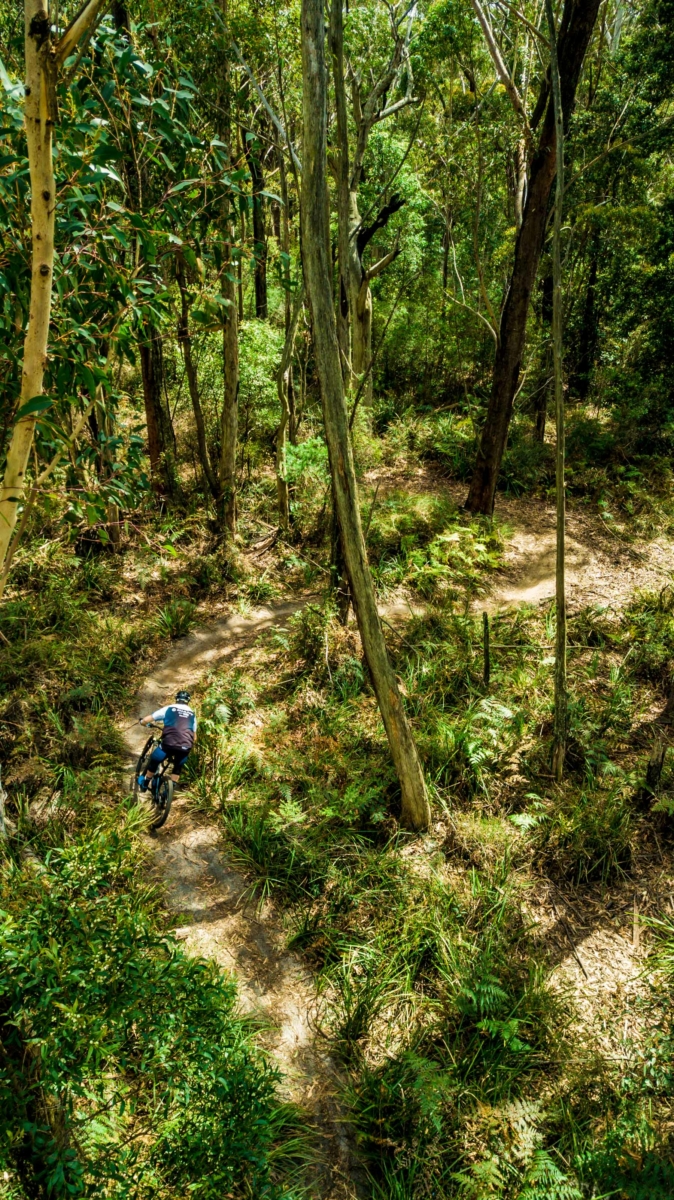
Wollongong becomes a bike city
It’s been a big couple of years for bike riders in The Gong. From earning UCI Bike City status and attracting the Road Worlds, to the completion of the Cringila Hills MTB park, and the release of the latest Illawarra MTB Strategy and the subsequent Review of Environmental Factors.
“We have this momentum to get this process rolling off the back of Road Worlds, and UCI Bike City Status. It has really enabled us to leverage that exposure and get a bunch of support for these trails,” says Giant Factory Off-Road Team rider and Wollongong local Josh Carlson.
“In the bigger picture, there are a lot of politicians, (people in) government and people outside of mountain biking talking about this project, and wanting it to succeed, which is a huge win. It’s really escalated and developed into a positive space over the last little bit,” he says.
The option to not develop a formalised mountain bike network in the Illawarra Escarpment is considered to be unrealistic and environmentally negligent
All of this has led to the release of the draft REF, which covers environmental, cultural heritage and geotechnical assessments, and outlines the potential impacts and how they can be mitigated.
“NPWS supports high quality, sustainable cycling experiences in the Illawarra Escarpment State Conservation Area, and riding is a fantastic way for people of all ages to enjoy the reserve,” says Kane Weeks from NSW National Parks.
“But this needs to be balanced with protecting the unique environmental and cultural values of this dedicated conservation area.
We have taken the time to get this right. The proposed network outlined in the draft REF caters for different riding levels while also protecting the conservation values and cultural significance of the Escarpment,” he says.

The trail network still needs a number of rubber stamps to go ahead, but the REF goes as far as saying, based on the demand for mountain bike infrastructure in Wollongong, it would be remiss not to move ahead with the project.
“The option to not develop a formalised mountain bike network in the Illawarra Escarpment is considered to be unrealistic and environmentally negligent,” the report says.
We’ve read our fair share of these ultra-dense reports on proposed mountain bike developments, and we’ve never seen language like this used in a document released by NSW National Parks — especially when you consider the ongoing battle local mountain bikers have had with Parks closing informal trails, and what’s happening just north of Wollongong in Royal National Park.
A project supported by NSW National Parks
Adrian Main from Synergy Trails, who put together the most recent Illawarra Mountain Bike Strategy and the concept design for the network on the Escarpment, tells us there has been a shakeup at Parks.
“I think it comes from a realisation that they’re just not going to stop people from going out and building trails, without taking some action, other than just constantly trying to close trails. They want to try and manage it as best they can, and through examples around the world, if you build something good enough, people don’t need to go out and build trails anymore,” he says.
The singletrack on the Illawarra Escarpment has been there for decades. Just like everywhere else in the world, when the powers at be don’t provide the infrastructure to meet the demand of the local population, folks take matters into their own hands.
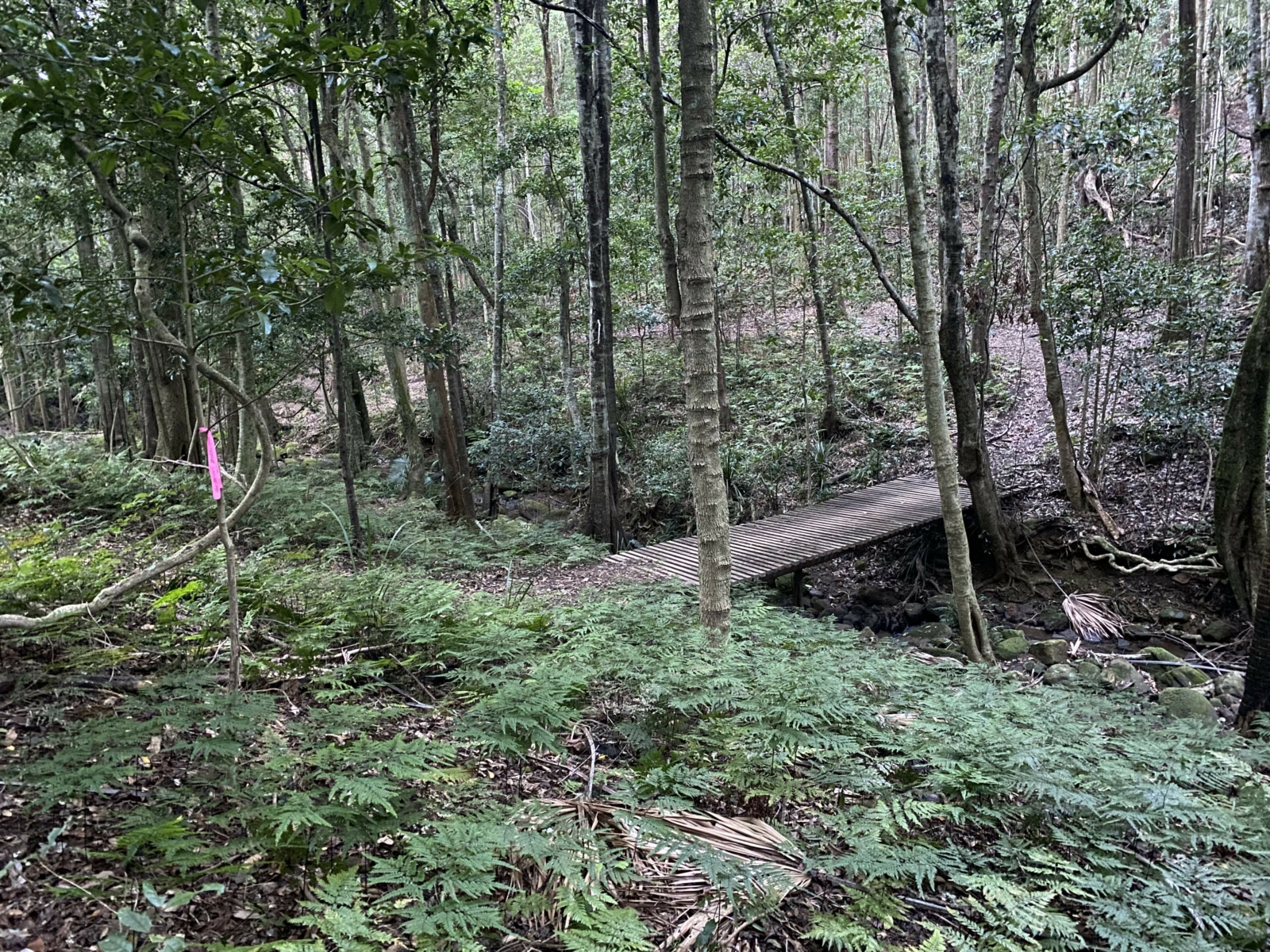
The Illawarra MTB Alliance was formed by a group of riders who felt like there was an opportunity to create a more formal trail network on the Illawarra Escarpment. They decided it was time to get organised and form a body that could serve as a point of contact where the local mountain bike community could focus its voice and energy on decisions being made about trails — while also being well aware that they weren’t an elected or appointed by the local community.
“Parks remit all along has always been to close down illegal trails because they may not have been built sustainably, or run through an environmentally sensitive zone and those sorts of things,” says Gary Pesavento, a founding member of the Illawarra MTB Alliance.
“Our contention with Parks and anyone else who cares to listen, has always been the only way you’re going to get people to stop riding on illegal trails is to build bigger and better, sanctioned trails. It’s not physically possible to police the National Park and stop people by that method,” he says.
In this most recent push, it’s been Parks leading the charge to get this network done, and it’s getting to the pointy end of the process now, but there is still plenty of work to be done.
What’s planned for the Illawarra Escarpment?
The plan for the Illawarra Escarpment network has taken quite a bit of massaging to get to the current concept design. Synergy first developed a concept plan circa 2016 at the behest of Destination Wollongong, focusing on Mount Keira, but at that point, Parks was not on board, and neither was the Aboriginal community. Then Dirt Art put together a plan published in 2018, to which another one of the major stakeholder groups objected. Synergy was then called back in 2020 for the latest version.
The network the latest version of the network falls across the Mount Brisbane and Mount Kembla, and sees 51km of trail, with 22km of that total using existing trail corridors. The concept design runs the gamut of difficulties, with flow trails, jump lines and of course, the rumble in the jungle tech the Gong is best known for.
“We’ve tried to use as much illegal track (as possible) and either keep it or make it more sustainable. But trying to keep as many of the corridors that have already been used, and then add to it with the new trail as well,” explains Main.
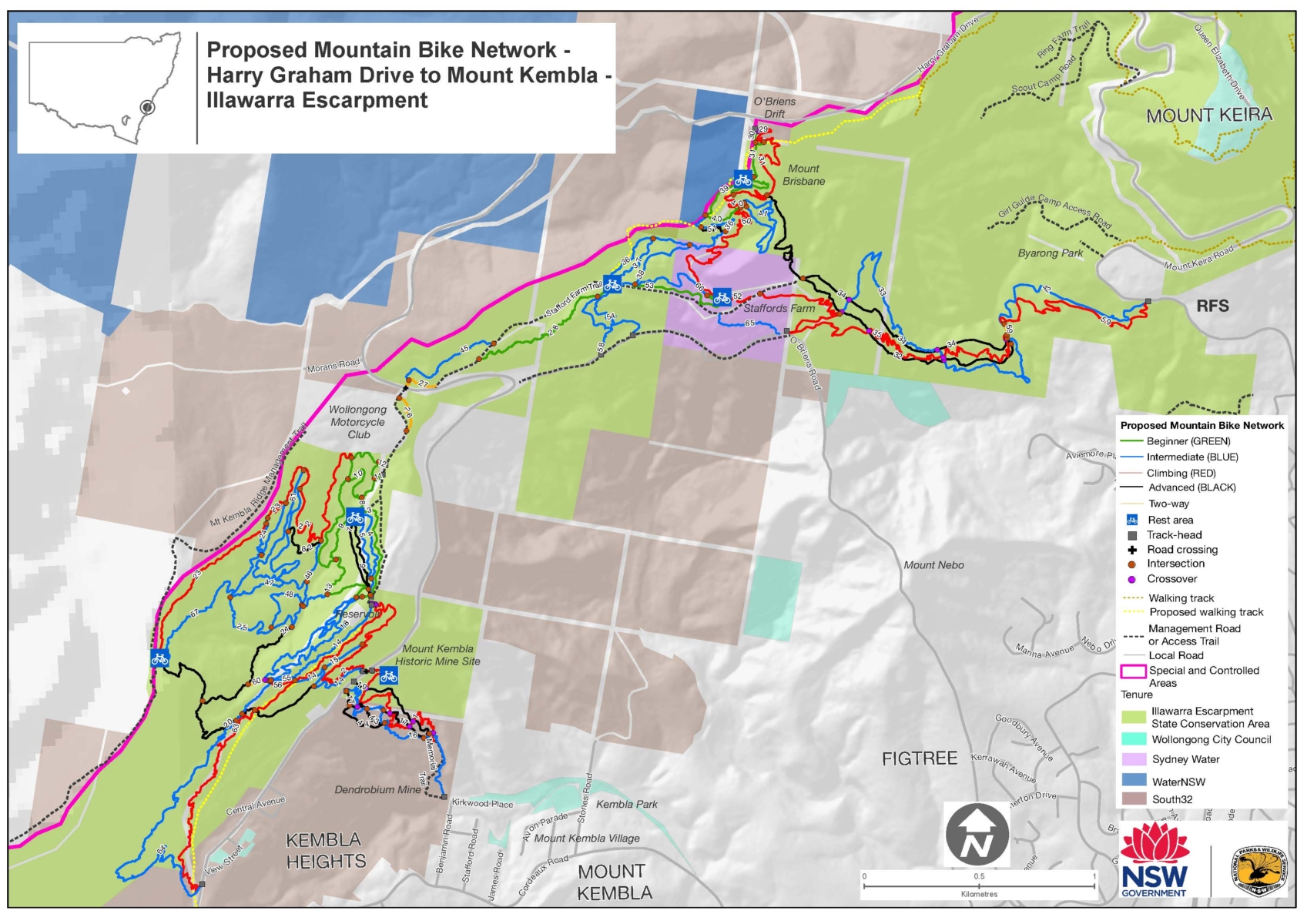
The concept design is divided up into several specific riding zones, which Main tells us were separated due to the steepness of the landscape. As part of the brief Synergy Trails were asked to find ‘like-for-like’ trails with Keira.
“Immediately, we say you can’t do like-for-like. It’s going to have to be better than what’s there. If you want people to stop riding on Keira, you’re going to have to offer something better, and give them something they’ll be proud of and take ownership of,” says Main.
It’s a huge process, and it’s not going to be an easy one. There are a lot of land tenure battles that we’re facing, and there is going to be some give and take. And there is a big conversation about the trails that will be taken away
The new network also lays out climbing trails, a missing component of the networks currently on this area of the Escarpment.
“Everyone climbs up the road, which was a major red flag for the council,” says Main. “It was important for us to get climbing trails in, and good climbing trails at that, so that people wouldn’t just revert back to the road. What that did is connect the different riding zones together.”
The trails on the Escarpment have been there for a very long time. They have a distinct character, and things have always been a certain way. When there is history and culture like this in a place, change is often a hard sell, and even though Synergy has been brought in to revamp the network, it had to be mindful that there’s an expectation about the character of The Gong’s trails.
“Part of the reason we decided to use as much of the illegal network as possible was to reduce the overall impact (because those trail corridors are already cut). We also tried to include as much of the stuff that’s already been built as well, because you don’t want to go into someone else’s patch and tell them what they want. These guys (and gals) have been out there working their asses off for decades,” says Main.

Gaining new trail, but potentially losing some too
While a significant amount of new trail will be built, the plan also outlines that some illegal trails will be retired and remediated.
Pesavento tells Flow that the National Parks Association and the Escarpment Alliance are already putting pressure on Parks to start closing trails — the REF hasn’t even been approved yet. The Illawarra MTB Alliance are pushing back, saying there is no point in rehabilitating some of the illegal trail network until the new trails are open.
“It’s a huge process, and it’s not going to be an easy one. There are a lot of land tenure battles that we’re facing, and there is going to be some give and take. There is a big conversation about the trails that will be taken away,” says Carlson. “The trails they’re planning to develop will offer that same vibe that we all like about Wollongong. They’ll offer more selection, and they’ll spread people out across the Escarpment. Once we get this first phase over the line, it will be much easier to get phase two, phase three, phase four and into the future, of legal mountain bike tracks in Wollongong.”
There is a whole new audience of people that are involved in the conversation because their family is involved (in riding bikes)
Some in the Wollongong Mountain Bike community also worry that once this trail network is open, it will bring more heat on other unsanctioned trails in the region because they fear Parks will have more justification to try and close some of those trail networks. As Carlson explains, the trails are so spread out across the Escarpment, you have a lot of locals who are specific to and passionate about their particular networks.
“It’s just not possible right now to get a blanket legalisation of everything,” he says.
Pesavento tells us that they have been pushing to get as many areas included in the plan as possible — like Tarrawanna/Possums, which the MTB Alliance has managed to get over the line — but some areas will still remain contentious.
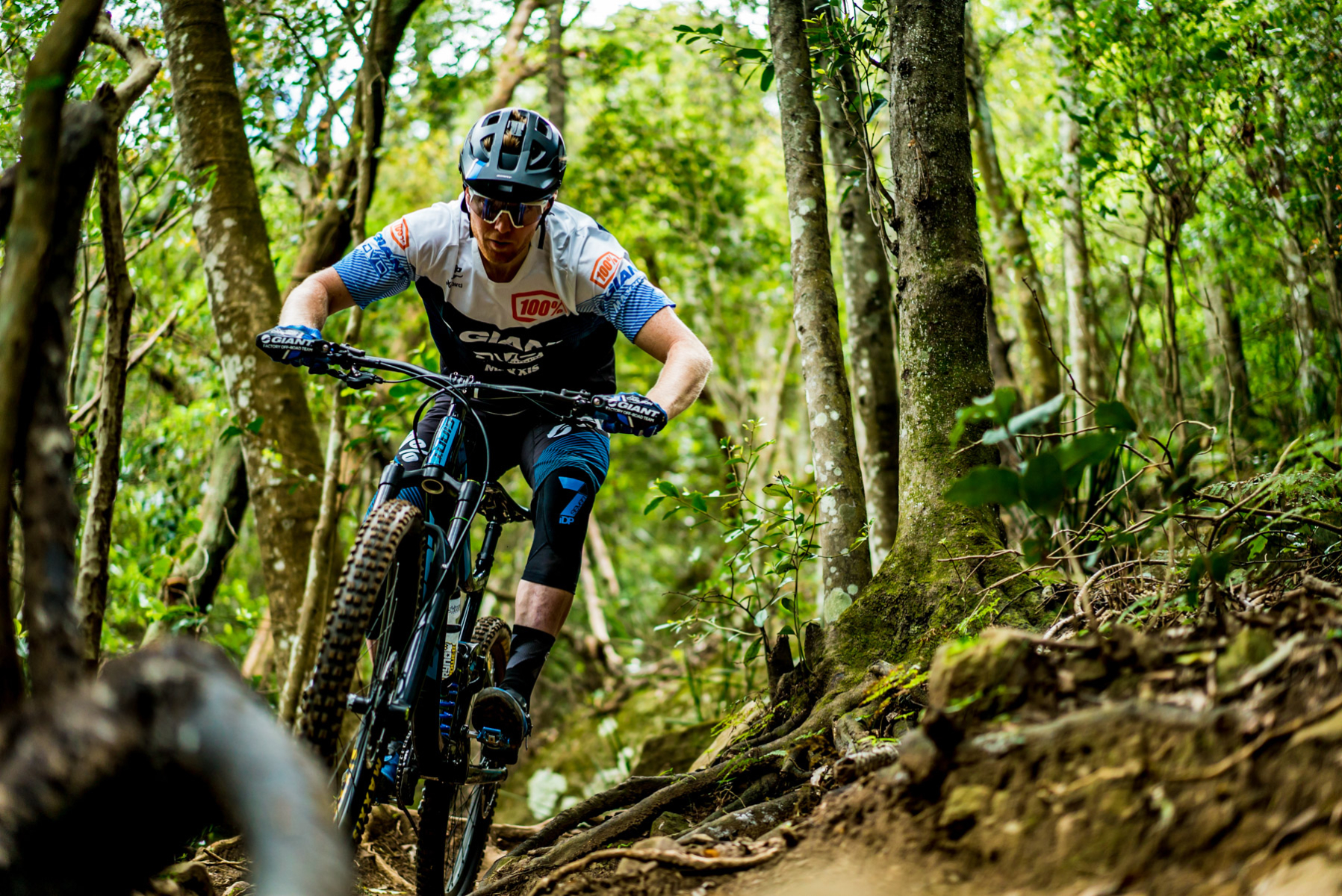
What do the locals think?
Mark Dobbins grew up in Kembla Heights, and reckons he’s lived there 40 of his 50 years on earth. He grew up riding bikes on the Escarpment and has advocated for the trail the whole way through.
“When they moved the (majority of the proposed) trail network over from Mount Keira to Mount Brisbane and Mount Kembla, some of the local residents formed a group and put up a bit of opposition,” says Dobbins.
Kembla Heights is a small little village up on the mountain. According to Dobbins, the houses haven’t really changed much over the years, and it’s an older population.
“They’re a little bit resistant to change and like to have the village life and the quiet life,” he says.

The trails have always finished in Kembla Heights, and as Dobbins explains, the other residents were raising concerns about noise, folks going to the bathroom in the bush, traffic and things like that. And with talk of the trails attracting more mountain bikers, which left some folks worried their little village would be under siege by riders. Dobbins was the first mountain biker to sit in on a group meeting and realised that the residents weren’t getting the whole story.
“Now a couple of mountain bikers have been included in the group and both sides understand more about the other’s point of view.
And from the meetings I’ve been to in the last 12 months, it’s certainly been a lot more positive than it has over the last four of five years,” he says.
But it’s not just in these community groups, Synergy Trails has been heavily involved in talking with the locals and social groups, but they were also conducting impromptu engagement sessions as they were out flagging the trail alignments.
“On the Escarpment, they always see people in hi-vis walking around because somebody is always doing a study, so people would ask us what we were doing. But we turned it around, and we’d ask them, ” How do you use this, why do you use it, how often are you here, what do you like about, what don’t you like” and things like that,” Main says.
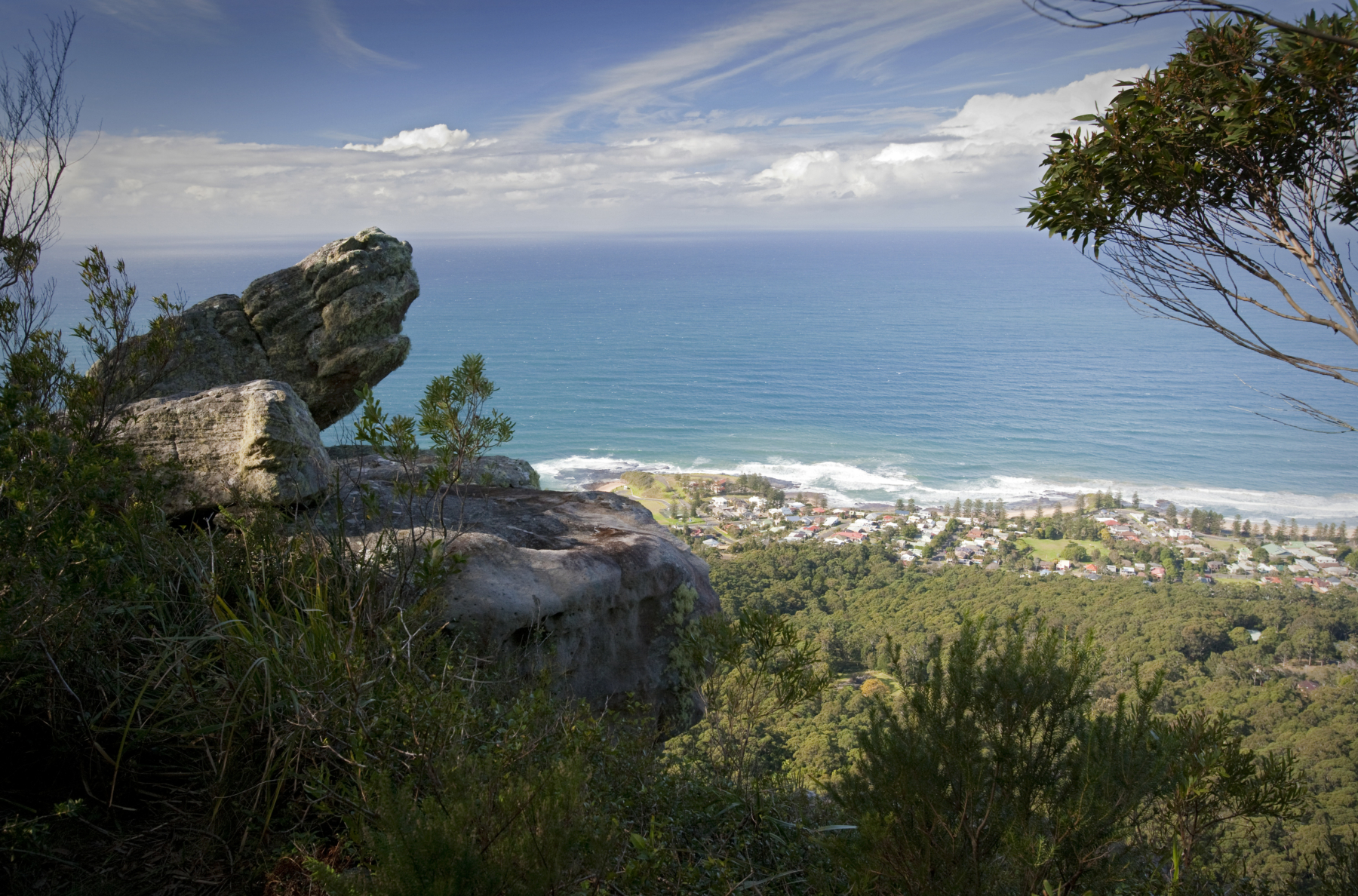
Main explains they used these chance face-to-face meetings to better understand how folks use what’s already on the Escarpment, whether they be mountain bikers or dog walkers. Then, they’d take all of this back to the stakeholder meetings and listen to their concerns to determine how best to mitigate them.
In Carlson’s experience in the wider community, there has been a noticeable uptick in people riding. And with the increased visibility of bikes, connections through the bike city status, Road Worlds, or Cringila, folks are engaging with the documents and the project plans rather than basing their opinion on something they saw on Facebook.
“The conversation has really evolved, and a lot of these people who really didn’t have any idea of cycling or mountain biking prior are getting the idea. There is a whole new audience of people that are involved in the conversation because their family or friends are involved (in riding bikes), and they’re like, ‘well, what is this? Oh, that looks pretty cool,'” Carlson says.
The REF was published at the end of June, and the public exhibition period has come and gone — it’s still available online, of course. Planning for stage two of the network in the Balgownie area is continuing, and the draft REF will be publicly exhibited when completed. All of this will form the final Illawarra MTB strategy, which will go out for public exhibition and comment at some point this year. If all goes according to plan, we could see work begin in early 2023!
Photos: Flow MTB, Synergy Trails, N.Cubbin DPE